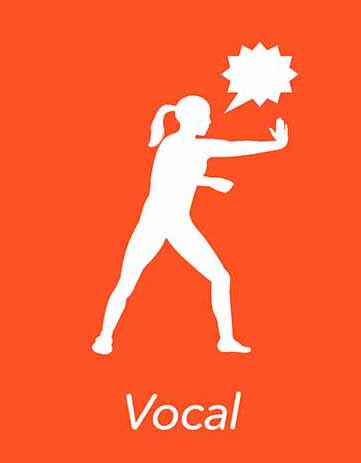SPRING is a five-year accelerator programme that supports business ventures to develop products and services to help girls earn, learn, save, keep safe and experience increased well-being. As one component of the overall evaluation of SPRING, the Impact Evaluation (IE) gathers Information on the economic and social outcomes of girls who benefit from products and services delivered by SPRING businesses.
Fightback is one of eight businesses that are included in the SPRING IE, and the third of the eight to have an end line report published. SPRING assisted Fightback to develop the Fightback Girls en-mass training programme to train hundreds of girls in a single session.
Coffey International a UK based Research Company and M&E partner of Spring for the impact evaluation of Cohort 2 business conducted the long term independent impact assessment. This groundbreaking study on the impact of self defense has been done for the first time in South Asia and 3rd in the world.
| Impact | Safety (& Learning) | Wellbeing |
|---|---|---|
| Areas | Direct benefit through training to improve safety awareness and self-defence skills; leading to safer behaviour change | Direct benefit through improved confidence, peer network and agency; shift in shame and blame culture |
| Expected Impact | High (5) | High (4) |
| Actual Impact | High (5) | High (4) |
1
Improved feeling of situational safety and improved satisfaction with ability to keep themselves safe.
2
Improved knowledge of safety and self-defence techniques.
3
Improved rating of self-assessed psychological and physical health.
4
Improved satisfaction with friendships, self-confidence and satisfaction with life overall.
Increase in Self Defense Skills
Increase in ability to stay away from Dangerous Situation
Increase in Self Confidence
Increase in ability to escape from possible threats
Increase in feeling of safety
Increase in alertness and active mind
1
KIIs conducted with head teachers.
2
Paired KIIs with adolescent girls who participated in trainings, and separate KIIs with their guardians.
3
FGDs with adolescent girls who participated in trainings, and an additional FGD held with a comparable sample of boys who did not participate in training.
KIIs = Key Informant Interview
FDGs = Focus Group Discussion

“Fightback training is not like other trainings that focus mostly on physical defense skills. Fightback training helps my daughter to be prepared psychologically, emotionally, mentally and physically to deal with any kind of possible harassments.”
“For me, Fightback training will be the first priority among different extra-curricular activities. I think Fightback, as safety education, is the most important skill for my daughter and I will be more than willing to pay for this training than spending money on other ordinary activities.”


“The training was so effective that it has made me confident and I feel I can deal with any kind of harassment.”
“Yes, I feel safer in the last 6-8 months after the training, I feel safer than before as now I know how to avoid risky situations. I have now become more aware of my surroundings and if anything happens, I can push the person, shout and ask for help.”

We conducted training for 600 adolescent girls across 12 districts. We also conducted pre/post evaluations and conducted an impact assessment after 3 months with all trainees. A sample size of 600 adolescent girls across 12 districts produced the following results.
Girls said that their self confidence increase
600 Adolescent Girls Trained Across 12 Districts

Mental Safety Skill Before the Program:4.69%
Mental Safety Skill After the Program:97.2%

Vocal Safety Skill Before the Program:4%
Vocal Safety Skill After the Program:94%

0% Physical Safety Skill Before the Program
After the Program 33% of Trainess got A Grade, 51% B Grade and 16% got C Grade on self Defense techniques
This is the first time I’m taking such training. It was my mom who insisted to take this training. I was not very sure because I have to leave work to attend this training. But fortunately this training has become a life changing experience for me. I was a very shy girl with low self-confidence but now I feel confident and assertively talk to anyone who tries to harass me. This training is beneficial not just for us adolescent girls but for women as well. The formulas for safety will be of great use now and in the future. I will talk about this training to my friends, sisters and also my brothers.


I have never enrolled this kind of training before but we need such trainings in our life. Most of the time, we used to be attacked, sexually harassed but we couldn’t do anything about it, we would quietly walk away but now we know how to verbally pacify the situation. Now after this training, we know the different techniques to safeguard ourselves in public vehicles as well. Well, we could forget a lot of other things but we could not forget about defending ourselves while being such vulnerable situations. Thus, we will never forget this training and will also help my friend and sisters against sexual violence.
I learnt the methods and techniques to protect myself during sexual harassment, the different steps involved in defending myself, I learnt about criminal profiling, types of rapists, criminal mindset and how to avoid them and not get into situation where you could be harmed. We can always be prepared for any kind of situation and use the different kinds of techniques we learnt during the training and defend ourselves.

Independent evaluation done by PROGRESS INC on Safe To Learn Project where VSO Nepal and
FightBack collaborated to provide Self-Defense training to 15695 girls and boys across 5 Districts of
Nepal.
The sample size of 379 students across 5 Districts provide the following result.
Changes in perspective and opinions regarding Violence and Sexual Violence in Male
Increase in Self-Efficacy in female participants
Increase in Self-Efficacy in male participants
Increase in Empowerment in female participants
Increase in Empowerment in male participants 93.1%
Increase in Confidence in female participants
Increase in Confidence in female participants
“A guy was trying to harass a female student. As we taught our students to scream and hit the perpetrator in his private parts and run to safety, the student did exactly that. She came to the school and reported it to teachers.”


The boys already are more confident in identifying risks, and more so they are less vulnerable than us and can protect themselves. The training has been instrumental for us girls as it provided us a new perspective about ourselves. We do not feel vulnerable as we did before.